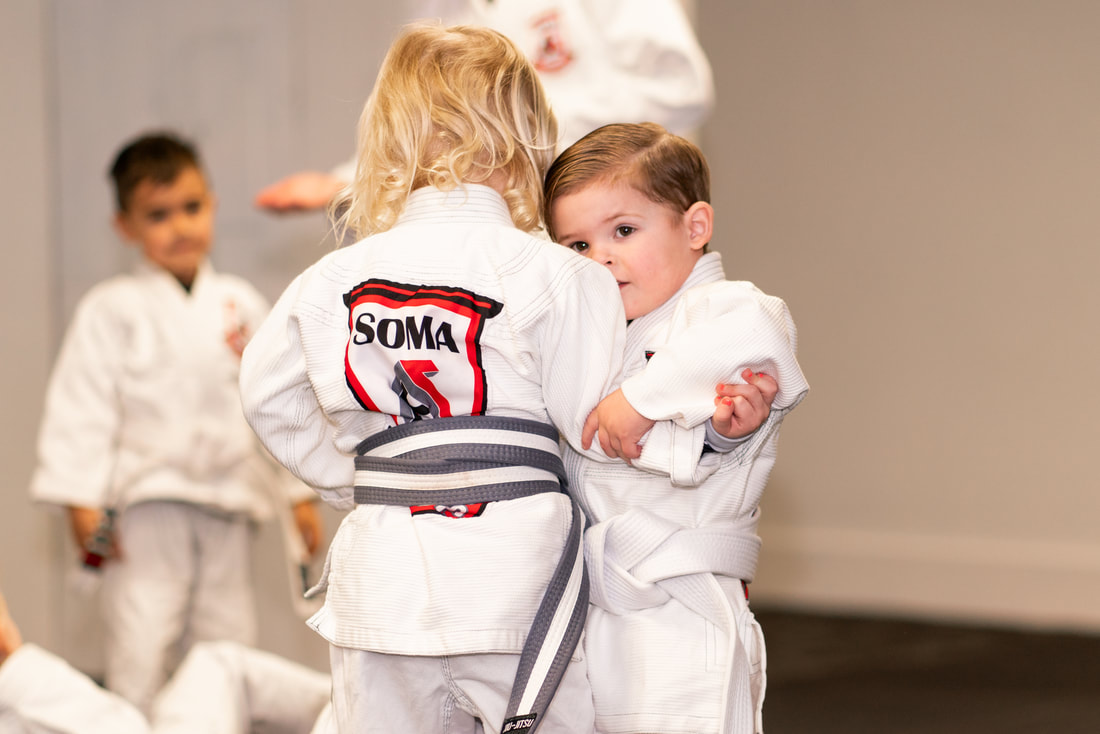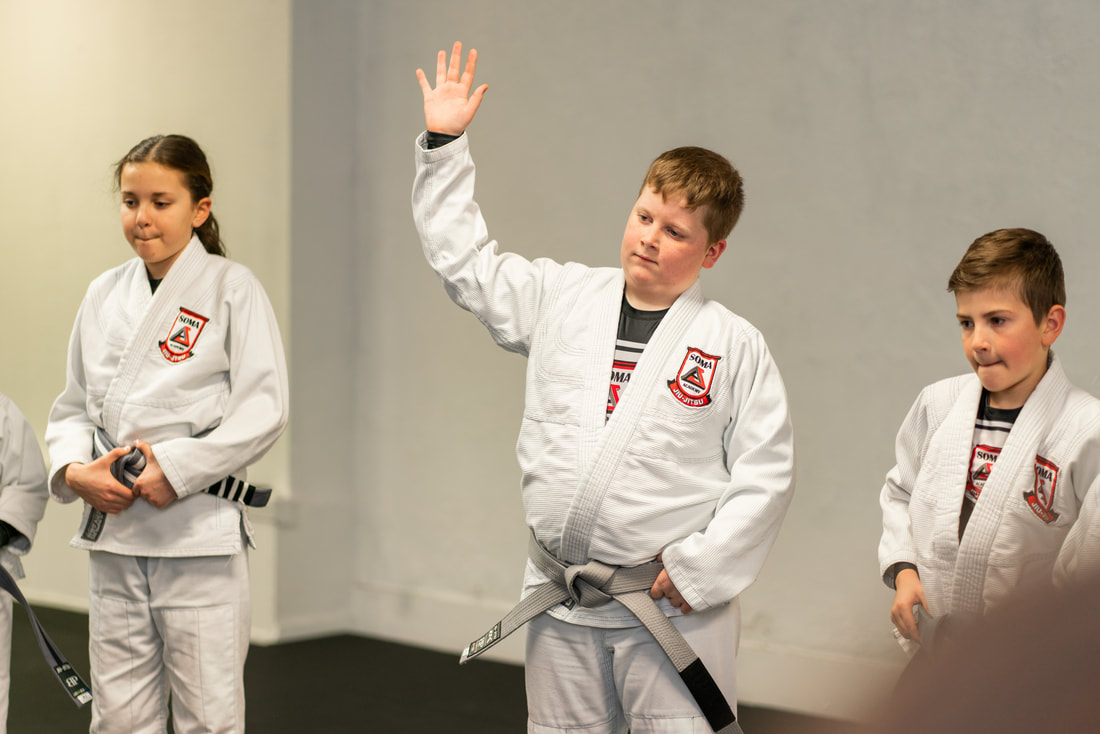Youth Programs
Young Gracie Jiu-Jitsu students are taught how to handle verbal, relational, and physical bullying. They learn what bullying really is and what to do about it. They are also taught to help others who may be victims. Most importantly, they learn to walk and talk with confidence, and how to speak and act with strength.
As students gain experience, their training becomes more and more challenging. Their instruction includes more advanced techniques and more intensive training. They earn belts and gain skills that prepare them to move into the adult program later on. As they move along, students learn to develop good nutrition and physical health. They learn to set and accomplish goals and overcome challenges. Most importantly, they learn that treating others with kindness and expecting kindness from others is a sign of strength. Huge emphasis is placed on character and good decision making. Students are taught to give respect and to expect it in return.
We talk a lot about bullying in schools, but it is a society-wide problem. It is often present in the workplace, in colleges and universities, on social media, at sporting events, and even at church. Anywhere that individuals are allowed to use power or strength to harm others, victimization can occur. Soma Jiu-Jitsu Academy teaches individuals of all ages how to prevent and respond to the imbalance of power that makes bullying and victimization possible - from road rage to harassment at school.
Both Adult and Child/Youth Soma Jiu-Jitsu programs are specifically designed to empower individuals and help them avoid becoming victims of any kind. Team members are taught to
Young Gracie Jiu-Jitsu students are taught how to handle verbal, relational, and physical bullying. They learn what bullying really is and what to do about it. They are also taught to help others who may be victims. Most importantly, they learn to walk and talk with confidence, and how to speak and act with strength.
As students gain experience, their training becomes more and more challenging. Their instruction includes more advanced techniques and more intensive training. They earn belts and gain skills that prepare them to move into the adult program later on. As they move along, students learn to develop good nutrition and physical health. They learn to set and accomplish goals and overcome challenges. Most importantly, they learn that treating others with kindness and expecting kindness from others is a sign of strength. Huge emphasis is placed on character and good decision making. Students are taught to give respect and to expect it in return.
We talk a lot about bullying in schools, but it is a society-wide problem. It is often present in the workplace, in colleges and universities, on social media, at sporting events, and even at church. Anywhere that individuals are allowed to use power or strength to harm others, victimization can occur. Soma Jiu-Jitsu Academy teaches individuals of all ages how to prevent and respond to the imbalance of power that makes bullying and victimization possible - from road rage to harassment at school.
Both Adult and Child/Youth Soma Jiu-Jitsu programs are specifically designed to empower individuals and help them avoid becoming victims of any kind. Team members are taught to
- Avoid becoming a target by using respect and civility, while projecting strength and competence
- Put a stop to name-calling and verbal harassment by addressing disrespect immediately
- Stop physical confrontations without needing to throw a single punch
- When necessary, subdue an aggressor in a legal and ethical way to keep themselves and their families safe.
|
Our Little Porcupines class is designed for ages 3-6. This class focuses on games and activities that help students becoming familiar with grappling and the most fundamental concepts of Jiu-Jitsu. The purpose of this course is to help young students develop confidence and patience.
|
Youth Jiu-Jitsu classes are currently combined. The focus of these classes is self-defense, bullying prevention, and leadership training. Open Mats for youth include drilling, training, and more active practice than instructional classes.
|



